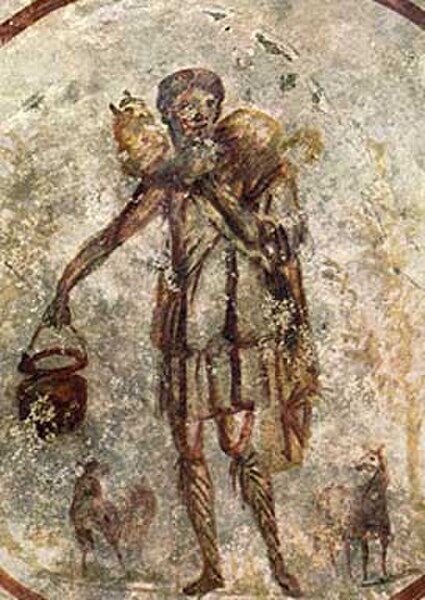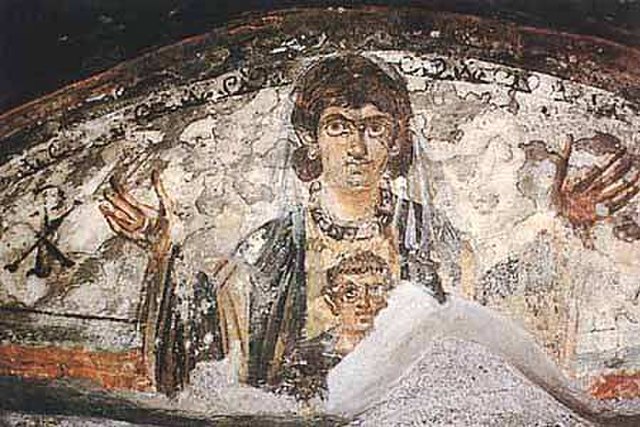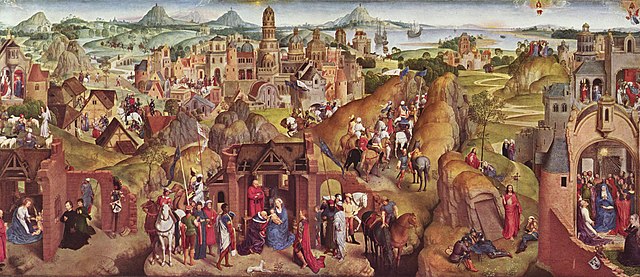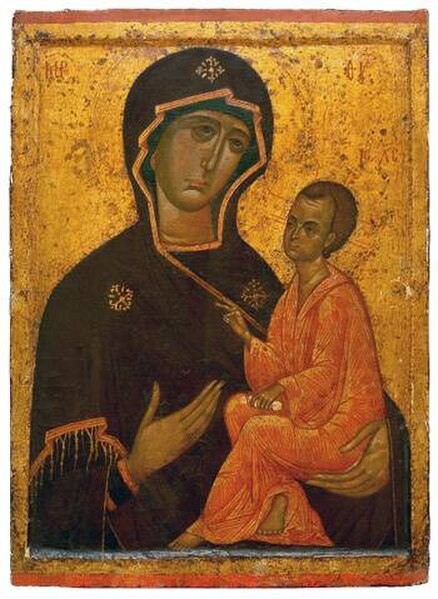Catholic art is art produced by or for members of the Catholic Church. This includes visual art (iconography), sculpture, decorative arts, applied arts, and architecture. In a broader sense, Catholic music and other art may be included as well. Expressions of art may or may not attempt to illustrate, supplement and portray in tangible form Catholic teaching. Catholic art has played a leading role in the history and development of Western art since at least the 4th century. The principal subject matter of Catholic art has been the life and times of Jesus Christ, along with people associated with him, including his disciples, the saints, and motifs from the Catholic Bible.
Coronation of the Virgin by Enguerrand Quarton (1453-54), with Christ and God the Father as identical figures, as specified by the cleric who commissioned the work.
Guido Reni's Archangel Michael tramples Satan (c. 1636, in the Capuchin church of Santa Maria della Concezione, Rome).
Christ Jesus, the Good Shepherd, 2nd century.
Virgin and Child. Wall painting from the early catacombs, Rome, 4th century.
Iconography, as a branch of art history, studies the identification, description and interpretation of the content of images: the subjects depicted, the particular compositions and details used to do so, and other elements that are distinct from artistic style. The word iconography comes from the Greek εἰκών ("image") and γράφειν.
Holbein's The Ambassadors (1533) is a complex work whose iconography remains the subject of debate.
A painting with complex iconography: Hans Memling's so-called Seven Joys of the Virgin – in fact this is a later title for a Life of the Virgin cycle on a single panel. Altogether 25 scenes, not all involving the Virgin, are depicted. 1480, Alte Pinakothek, Munich.
A 17th century Central Tibetan thanka of Guhyasamaja Akshobhyavajra.
The Theotokos of Tikhvin of c. 1300, an example of the Hodegetria type of Madonna and Child.








